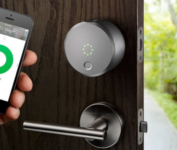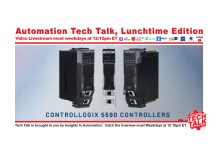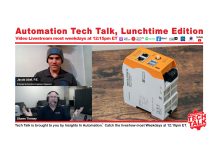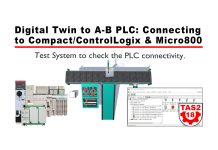
One topic that is taking over many conversations, and decisions involving control integration, is that of the rapidly growing Internet of Things (IoT).
This has been expanded to IIoT (Industrial IoT) which some celebrate as a major part of the 4th Industrial Revolution (Industry 4.0.)
In this article I’d like to pass on what I’ve learned about this hot topic, and layout some thoughts and key points to consider when integrating IIoT into new and existing control systems and processes.
Honestly, the chosen name can be a little strange if you’re hearing it for the first time.
Even after many seminars, webinars, expos, and college IT courses, I’m still asking, “why did they choose ‘things‘”?
Here is a brief description of what the ‘things‘ are using an excerpt from Wikipedia:

“…vehicles, home appliances, or any other device that contain electronics, software, sensors, actuators, and connectivity which allows these things to connect, interact and exchange data” – Source: Wikipedia
With the use of IoT, there’s the ability to monitor all of these devices. From your truck, to your car, to any device inside your home.
Some IoT devices can also learn, connect in multiple ways, and even learn where and how to connect. This is typically accomplished through mobile apps and open-source software.
Here are some key points to consider when reviewing the hardware needed to integrate new or existing controls into the web that is IIoT and/or MES.

- Communications:
- How many different protocols (gateways) are needed?
- What is the distance or area being covered
- What are the total number of connections
- Levels to encompass:
- Control Systems (i.e. PLCs)
- SCADA
- MES
- ERP
- Cloud
- Data Storage (local, remote, size, ease of expansion, cost)
- Type of analytics and control (Dashboards, SQL)
Beyond these points, security needs to be at the top of your to-do list when deciding on an implementation. And security becomes more and more important as the number of devices that are connected and communicating grows over time.
Manufacturing Execution Systems (MES) and Enterprise Resource Planning Software (ERP) may also be part of the discussion when delving into the IIoT realm, and they will have their own considerations which need to be addressed.
These include Data Storage and Cloud Access (let’s add Big Data to the keywords here). And these are also tied heavily into security as well.
And as always, planning is essential in order to maintain a focus on the key features and functions you need.
Depending on what you determine are the most important aspects of your system, you may have to design from “storage availability” backward to the “plant floor,” or vice versa.
Also be sure to build-in expandability options, leaving yourself plenty of room to grow to meet future needs.
And finally, when it comes down to the implementation phase, in many cases it’ll make the most sense to start with a single process, line, or building, especially if you have many that you will be adding to your system.
Taking a “phased” approach like this often simplifies the initial startup, as well as allows for easier “tweaking” of the system to work around unforeseen technical issues prior to rolling the system out to the rest of your facility.
And the efficiency gains and cost savings achieve from the initial phase could be used to justify or even fund the expansion of the system.
Written by Paul Hunt
Senior Automation Engineer and Freelance Writer
Have a question? Join our community of pros to take part in the discussion! You'll also find all of our automation courses at TheAutomationSchool.com.
Sponsor and Advertise: Get your product or service in front of our 75K followers while also supporting independent automation journalism by sponsoring or advertising with us! Learn more in our Media Guide here, or contact us using this form.
- Mitsubishi PLCs: Brief History and Hardware Overview - August 2, 2022
- Mitsubishi PLCs: FX5 vs iQ-R - February 10, 2022
- How To Register and Use a Device Profile in GX Works3 - November 9, 2021

Discover more from The Automation Blog
Subscribe to get the latest posts sent to your email.




